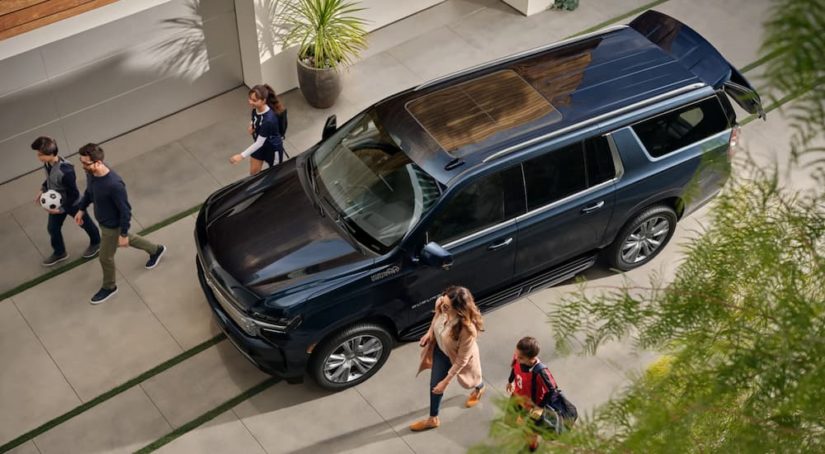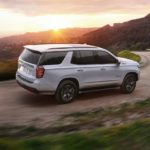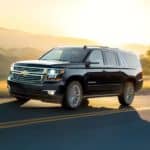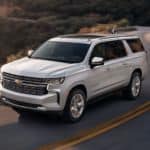Big vehicles are a different ball game. They can’t hide in the same ways that a small car like a sedan can. We expect less from smaller cars, and therefore we don’t notice as readily when they are lacking. If you take a stroll at an SUV dealer, however, you’ll see vehicles that exist on a whole different level. But because of this, you’ll see more easily when an SUV fails to integrate its design and its functionality, when it has flashy features that are exciting for a moment but quickly decay, or when it overemphasizes fashion at the expense of performance and functionality. If you’re looking for an SUV, you don’t want to be swayed by popular opinion, numbers, or even personal taste. All of these things certainly mean something and should be considered in the decision-making process, but it is important to understand what makes a good SUV and which SUVs are good SUVs. So that you are not left to figure that out for yourself, we’re going to discuss it here today. Take notes if you want, or just read carefully. But you’ll want to remember this information.
What Is an SUV?
You may know (and if you don’t, there’s no shame in that) that SUV stands for Sport Utility Vehicle. As the name would suggest, SUVs are designed to allow for utility and to help drivers in work or life-related tasks which require a little extra athleticism or power. SUVs are in a uniquely good position in that they bridge the gap between a car and a truck and, in more recent years, tend to focus on bridging the gap specifically between a sports car and a truck.
While cars are oriented towards everyday domestic commuting and trucks are designed for grittier work-related driving, SUVs allow for both. During the past few decades, most SUVs have really focused on leaning into luxury designs and refined interiors. This makes SUV shopping especially exciting; you get the strength of a pickup truck, but the increased interior space allows for higher-end design features and room for more passengers, making for a better overall driving experience.
So, that’s all great. But that doesn’t just happen, and it certainly does not happen easily. In fact, it is quite difficult to find that delicate balance, and not all SUVs do find the balance. So what makes an SUV good?
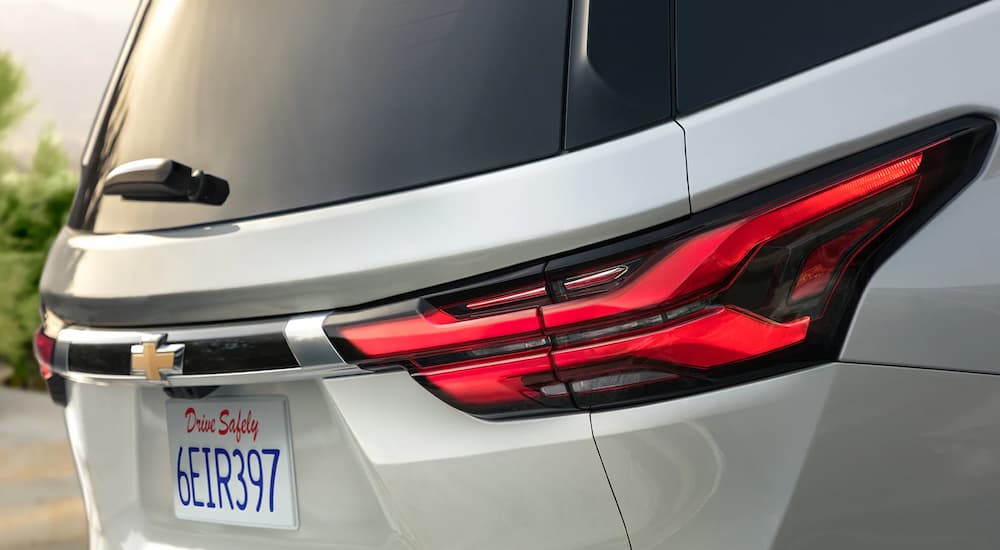
Finding the Balance
Ultimately, crafting a good SUV is all about finding this balance between luxury driving and workhorse performance. While this is true, the word “balance” can sometimes give the impression that certain features have to be let go of in order to make way for others, and it can sound like you’re settling. Of course, we all know that life isn’t perfect and we can’t have everything all at once all the time. But, the essence of SUV excellence is not about balance in the traditional sense, as much as it is about integration.
Form is function for a good SUV because it integrates its architecture, performance, design, and technology to make sure that everything ties together in a harmonious and effective manner. Specifically, you want an SUV with a fashionable exterior design, but one which stems from architecture that maximizes aerodynamics, durability, and accessibility. Inside, you want a nicely-designed interior with easily-accessible driver assistance features which optimize performance while also adding to the refined design of the vehicle. Of course, you also want technology that not only entertains but that helps you remain connected to your vehicle’s vitals, maximizes safety, and adds an illuminating glow to the vehicle’s aesthetic.
Finding the Features
So, what are some specific features to look for, features which are a sign of integration? Well, starting with the exterior, you want to look for a grille that gives the vehicle the look you desire while also using innovative engineering to make sure the vehicle’s airflow is healthy; a healthy airflow goes a long way with your SUV’s long-term health. Features like this, which combine form with function, are signs of a well-integrated SUV.
When it comes to interior features, you want to look for generous and highly-flexible passenger and cargo space. Cargo space is fantastic, but if it takes away from passenger space, having too much cargo space can be detrimental, and vice-versa. The key is space that is adaptable, allowing for both maximized passenger and cargo space, depending upon the situation. When it comes to interior features which maximize performance, you want to look for easily-changeable drive modes; for example, if you want to shift from FWD to AWD, having a knob or a button that does this in one quick push is a huge benefit.
Of course, with technology, you want to find features that not only offer a wide variety of entertainment, connectivity, and safety but that present themselves in innovative and creative ways. This means seeking not only an infotainment screen but also a driver information center and even a heads-up display. This will allow you to connect with your vehicle and the specifics of your current drive and thus bring your integrated driving experience full circle.
The presence or absence of any one of these features does not necessarily indicate an integrated or unintegrated SUV. But the trick is to know the features that indicate integration and to search for patterns. If you notice a number of features that point towards integration, then chances are when you get in for the test drive, you’ll find that everything works together harmoniously. If you notice that the features are somewhat separated and unrelated, chances are that you’ll find a less integrated experience upon the test drive.
The specific vehicle is up to you, of course, and understanding what makes a good SUV and what features to look for will help you make an educated decision while also providing for your personal tastes. However, if I may be so bold, there is one vehicle that I would like to submit for your consideration as a very well-integrated SUV.
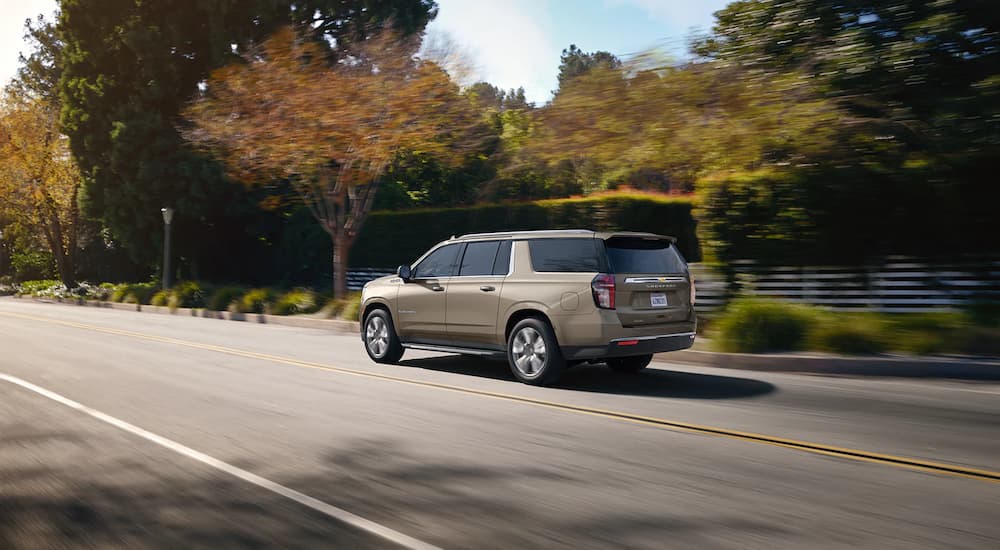
The Suburban: A Legacy of Integration
You’ve probably heard of the Chevy Suburban. If you haven’t heard of it, I can almost guarantee you’ve seen it heading up a secret service convoy or serving as a limousine for a public figure. This fantastic SUV is Chevy’s longest-lasting nameplate (which means something from a brand that is over a century old), and for good reason.
While the Suburban has long been a staple of Chevy’s lineup and of the SUV market as a whole, it was recently reimagined for the 2021 model year. With two years to refine its redesign, the 2023 Suburban is the best the nameplate has ever seen. Perhaps the biggest component of the vehicle’s redesign is its all-new chassis, which not only provides the Suburban with a bold and aesthetically-pleasing exterior but also provides balance and smoothness like no other SUV.
What the newly-designed chassis means for the Suburban’s interior is more passenger and cargo space than ever! With 144.7 cu.ft. of cargo space (that’s a best-in-class number, unsurprisingly), the space is yours to do with as you see fit; there are all kinds of ways to arrange it, whether you’re looking to maximize space for people or luggage.
As a leader in the segment of in-vehicle technology, the 2023 Suburban has integrated technology at an unprecedented level. With the most standard and available technology features that the Suburban has ever seen, you and your vehicle will be in good communication about how your drive is going. With the recent addition of Google Built-In, you’ll be connected in a more dynamic way than you ever thought was possible.
There is a lot more to be said about the Suburban, but for now, I’ll leave it at this: if you want to see what SUV integration looks like, get into a Suburban for a test drive.
Making the Choice
Ultimately, the specific vehicle is up to you. What is most important is that you know what to look for and that you have the information you need to make an educated and informed decision. Remember that while you want a balanced SUV, balance at its best is not about throwing out one feature in order to make way for another but about integrating all of the vehicle’s components so that they work together to give you a dynamic driving experience. If you do your homework, you’ll know integration when you feel it. So, don’t worry about finding the exact right vehicle, because there are all kinds of right if you know what to look for.
